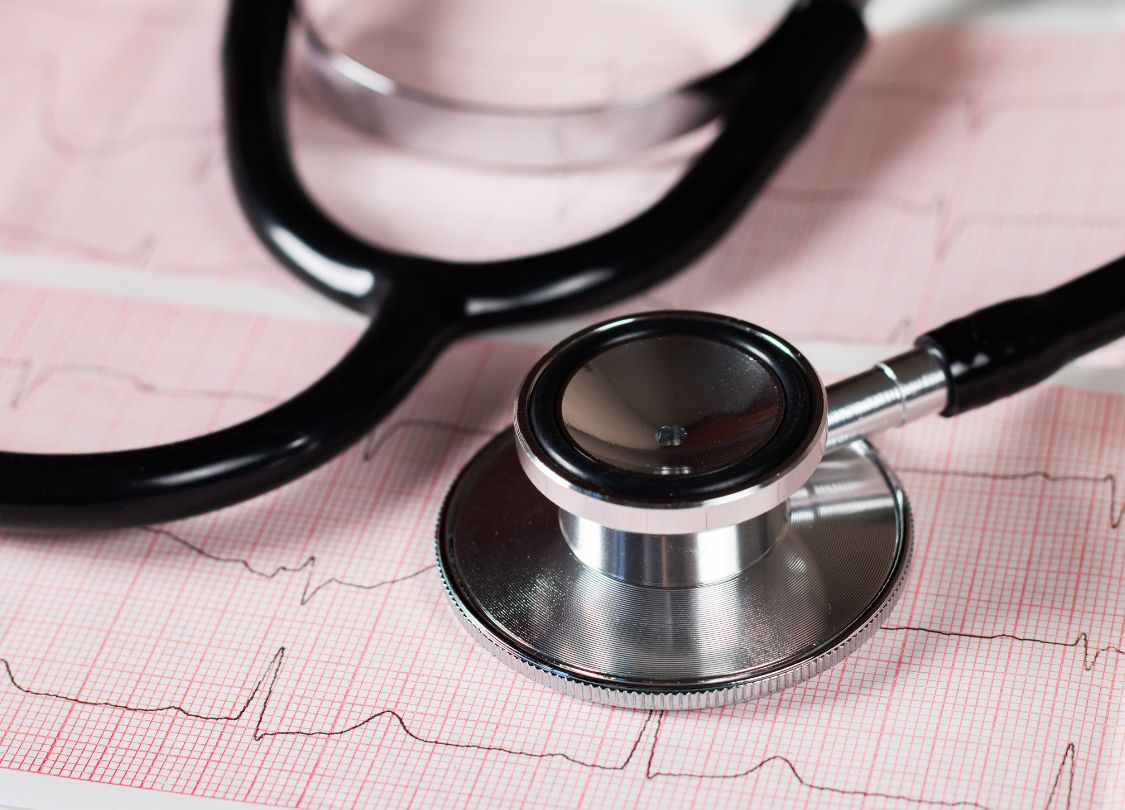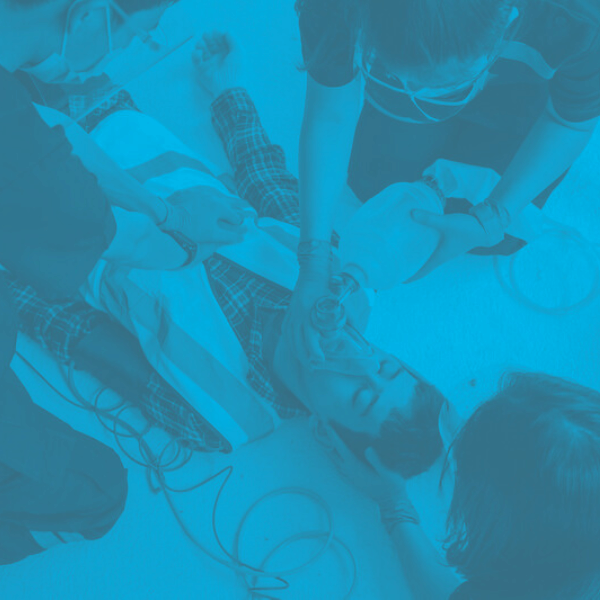How Do Healthcare Professionals Implement ACLS Algorithms?
How Do Healthcare Professionals Implement ACLS Algorithms?

by Greta Kviklyte
Life Saver, AMC
Co-authored by Kim Murray, RN, M.S.
posted on Jul 30, 2024, at 9:02 pm
According to the Sudden Cardiac Arrest Foundation, there were around 356,000 cardiac arrests in the US in 2022, representing a small jump from the 2015 data. These numbers, compiled from data at the Resuscitation Outcomes Consortium (ROC) and Cardiac Arrest Registry to Enhance Survival (CARES), represent a need for effective mitigations in the event of these emergencies.
Advanced Cardiac Life Support (ACLS) algorithms refer to the techniques that healthcare professionals use to manage symptoms and promote better outcomes during the worst-case scenarios. When 90% of the cardiac arrests referenced above were fatal, it shines a spotlight on the critical nature of these events and why it’s so important to understand what can be done and how it can best be implemented at the first sign of trouble.
We offer Online ACLS Certification and Renewal
Before You Start
 In the event of cardiac arrest or stroke, immediate intervention makes a huge difference. This is why it’s so important to recognize the initial symptoms so you can spring into action sooner rather than later.
In the event of cardiac arrest or stroke, immediate intervention makes a huge difference. This is why it’s so important to recognize the initial symptoms so you can spring into action sooner rather than later.
As a general rule, particularly if you’re not a doctor and don’t have access to medical equipment, your best course of action is to get access to medical support as quickly as possible and to administer basic healthcare (e.g., CPR, etc.) until help arrives. Below, we’ll look at the symptoms, what to do if you encounter different types of cardiac events, and the steps healthcare professionals will typically take once they’re in charge.
Keep in mind that ACLS and BLS (Basic Life Support) share very similar initial steps. If you’re comparing ACLS vs BLS, the main difference is that ACLS takes BLS several steps further. With BLS, you’re providing immediate care for the injured patient, which can include CPR, defib, choking relief, etc. ACLS is more advanced care, referring to anything from airway management to CT scans to full work-ups post event.
Acute Stroke Algorithm
An acute stroke occurs when the brain’s blood flow is interrupted. This is often due to a clot in the blood vessels, but it can also occur if a blood vessel ruptures. In both cases, the longer the brain is deprived of oxygen, the more cells will die.
The acute stroke algorithm involves the following:
- Spot the symptoms: If a person’s face is drooping, their arms are weak, or they’re having difficulty speaking, they may be having a stroke.
- Call 911: An EMS team monitors the patient, notes the onset of symptoms, provides oxygen, checks glucose, and triages to the appropriate part of the hospital.
- General assessment: This includes vital sign evaluation, neurological assessment, MRI orders or emergency CT scans, lab assessments, ECGs, and stroke team activation. The goal is always to complete these tasks as quickly as possible after the initial sign of symptoms.
- Neurological assessment: This includes full patient health history, neurologic exam, and analysis of symptom onset.
- Hemorrhage assessment: In the case of hemorrhage, the patient will be admitted for treatment, and their healthcare team will develop a stroke protocol to manage and treat the condition. If there’s no hemorrhage, the patient will be evaluated for fibrinolytic therapy to effectively dissolve clots that could lead to further strokes.
Acute Coronary Syndrome Management
An acute coronary can refer to either angina or a heart attack. If a person is suffering from Acute Coronary Syndrome (ACS), they might experience chest pain, discomfort in their arms, jaw, neck, or stomach, shortness of breath, dizziness, nausea, or excessive sweating.
The general ACLS algorithm includes the following steps:
- Assessment and early intervention: EMS teams will assess the patient, administer oxygen, morphine, or nitroglycerin as needed, and prepare them for hospital care, which will include an ECG. In general, the patient will only need CPR if they’ve gone into cardiac arrest, meaning their heart has stopped beating. If there are no available medical supplies, aspirin can thin the blood so it’s easier for the heart to process.
- ECG Interpretation: This is the most involved step in this ACLS algorithm, as it takes into account protein levels and heart muscle thickness. If the patient’s ECG reveals ST elevation, they’ll need immediate transfer to a cardiac catheterization lab.
- Monitoring: Vital signs, heart rhythms, and pain levels can all indicate how well the patient is recovering. It’s important to keep an eye on these factors even after the patient is out of immediate danger.
Adult Tachycardia with Pulse Algorithm
As the heartbeat starts to speed up, it can result in chest pain, fatigue, dizziness, and palpitations. While the pulse rhythms indicate that the heart is beating at a regular pace, it’s critical to step into action at the first sign of symptoms.
The adult tachycardia with pulse ACLS algorithm involves the following:
- Assess heartbeat: Tachycardia is usually defined as more than 150 beats per minute.
- Treatment: This may mean assisted breathing, administering oxygen/IV, monitoring blood pressure, or performing an ECG.
- Additional care: If the tachycardia is persistent and causing more alarming symptoms, such as mental failure or heart failure, the patient may need sedation or adenosine to restore a more regular heartbeat. If the patient’s vitals do not follow regular patterns, they may need an expert consultation to determine the best course of treatment.
Adult Bradycardia with Pulse Algorithm
When the heart rate slows, it can result in faintness, dizziness, shortness of breath, fatigue, or chest pain. It can be causedby anything from heart damage to medications to thyroid disorders. In some cases, bradycardia is normal for healthy adults while they’re at rest. For others, it can be a sign of heart failure.
ACLS algorithms for adult bradycardia with pulse include the following:
- Assess heartbeat: Bradycardia is usually defined as less than 50 beats per minute.
- Treatment: This may mean assisted breathing, administering oxygen/IV, monitoring blood pressure, performing an ECG, or assessing potential hypoxic or toxicological causes. It’s critical not to overventilate the patient if they require oxygen. This will mean carefully titrating to achieve ETCO2 levels of between 35 to 40 mm. The exact dosages will depend on whether you’re administering atropine, dopamine, or epinephrine.
- Additional care: If the patient is not displaying signs of hypotension, altered mental state, chest pain, or acute heart failure, then the next step is to monitor and observe. If they are, they may need an expert consultation to understand more about their condition, what’s causing it, and how it can best be treated.
Adult Immediate Post-Cardiac Arrest Management Algorithm
The ACLS algorithm for immediate post-cardiac arrest management starts with proper management. Once the heart begins to beat again, emergency medical staff need to oxygenate the blood, assess pressure, and evaluate the total damage to the heart.
The tachycardia ACLS algorithm with pulse involves the following:
- Managed care: Respiratory parameters, hemodynamic parameters, and airway will all need to be addressed. For example, early placement of an endotracheal tube can ensure the patient receives more oxygen during a critical period.
- Emergency intervention: The patient may need emergency intervention if mechanical circulatory support is required, if they’re in unstable cardiogenic shock, or if STEMI is present.
- Assess brain functionality: If the patient can follow simple commands, they’ll require standard critical care management. If not, they may need EEG monitoring, CT scan, or TTM.
- Ventilation: Ideal ETCO2 levels are between 35 to 40 mm. Reversible causes of post-cardiac arrest include toxins, hypovolemia, hypoxia, and hypothermia.
Adult Cardiac Arrest Management Algorithm
When a person goes into cardiac arrest, the first step is CPR. It’s important to get the patient’s heartbeat started as quickly as possible to avoid brain damage.
The ACLS algorithm for post-cardiac arrest care includes the following:
- CPR: You’re aiming to push down on the chest at least two inches and to allow enough time for the chest to recoil.There should be no interruptions in the cycle for best results. Your compression to ventilation ratio should be 30 to 2 and if the ETCO2 levels are below 10 mmHg, you may need to adjust your CPR rhythms.
- Shock: The ACLS algorithm recommends biphasic delivery of energy during defib, as opposed to monophasic waveforms. Typically, manufacturer recommendations for shock energy start at a dose of 120 to 200 J. If you’re unable to access the recommendations, we recommend the maximum available with subsequent doses at around the same levels.
- Circulation return: Once pulse, arterial pressure, and blood pressure have returned, the patient may need additional intubation or drug therapy. Reversible causes of cardiac arrest include acidosis, hypoxia, hypothermia, and tamponade.
Electrophysiology ACLS
The ACLS for electrophysiology comes down to the rhythms of the heart. The faster you can read and interpret the signals, the easier it is to understand the heart’s patterns.
ACLS algorithms includes the following:
- Recap the PQRST Properties: Review the ECG tracking, including P waves, QRS complex, T waves, PR segment, ST interval, QT interval, and RR interval.
- Identify common categories: Atrial dysrhythmias will present differently than tachyarrhythmias. It’s important to understand how these categories (e.g., sinus, conduction blocks, etc.) break down so you can assess the patient’s condition.
- Identify the most common ACLS rhythms: Normal Sinus Rhythm (NSR) and Sinus Bradycardia. Sinus Tachycardia, 1st Degree Heart Block, 2nd Degree AV block Type I (Mobitz Type I, Wenckebach’s). 2nd Degree AV block Type II (Mobitz Type II), 3rd Degree AV block (complete heart block, CHB), Supraventricular Tachycardia (SVT), Atrial Fibrillation (aFib), Atrial Flutter, Ventricular Tachycardia (vTach), and Pulseless Ventricular Fibrillation (vFib) are all normal ACLS rhythms.
Learn More About ACLS Algorithms
The above information touches on the basics of ACLS algorithms, though each step for each condition will take some time to master. Learning more about the algorithms can help you feel more in control of the situation, so you can be more confident with how to best help the patient.
If you want to get your certification in ACLS algorithms, the certifications and renewal training courses at Advanced Medical Certifications (AMC), our online courses and certificates are just as credible as those administered in a classroom setting. All courses are designed by Board Certified Physicians and adhere to the latest ILCOR standards, so you can be certain you’re receiving the most accurate information.
To take (and ace) the course, you’ll simply need to review online course materials, watch videos, and engage in helpful skill sessions. At AMC, we allow you to work at your own pace, making our courses accessible from anytime, anywhere. The entire recertification or certification course for ACLS algorithms can be completed in as little as an hour, making it easy to study and take the exam in one sitting!
To get ACLS Certification and Recertification, click here to get started.
FAQs
What are ACLS algorithms?
ACLS algorithms refer to the steps that you should take after a person has suffered from a cardiac event. While each algorithm varies, the goal is always to restore oxygen levels and limit permanent damage.
Can I administer ACLS algorithms without medical equipment?
Most steps involve some degree of medical equipment, though you can administer CPR to help restore basic functionality and limit patient damage if the event occurs outside of an equipped setting.
What Is ACLS Certification and Do I Need It?
ACLS certification refers to the official exam given for ACLS algorithms. It covers many of the above topics, including proper ventilation techniques and managed care best practices.
Not everyone will need ACLS certification, though it depends on the organization. Most hospitals and medical settings do require these certifications if you work with cardiac patients. If you’re working as a home health aide or caregiver, having this certificate can make you a more attractive job candidate, not to mention more effective at your job.
What Is the Chain of Survival?
The Chain of Survival refers to the steps you’ll take after a cardiac event. These include: activation of emergency response, early CPR, defib, advanced life support, post-cardiac arrest care, and recovery. While each patient will need personalized treatment plans, these basic steps help you prioritize your time and efforts.
Is the ACLS algorithms course difficult?
No! In fact, many people are able to complete it on their own time at their own pace. After going over the basics and watching the videos, it’s easy to ace the exam.



